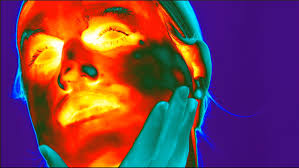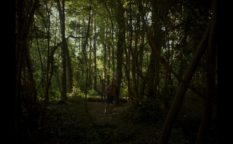Reflections 4

I have forty-three tabs of my Safari web browser open on my mobile phone. There’s another twenty or thirty open on my laptop. Many of them are articles I’ve either half read or intend to read. There are links to resources and google docs that have tens and maybe hundreds more links to explore. I have started watching films, exploring artwork and understanding the world in the same way that I do my grocery shopping. One tab is a virtual book splurge, where I literally and endlessly add knowledge I ought to have into an, albeit virtual, shopping basket. It’s funny that the supposed end point to this activity is to ‘check out’.
One tab that’s been open for several months, now, is isolationtv.org. It’s a selection of short films, “a response to quarantine and social distancing,” curated to showcase artist moving image work at a time when museums and galleries are closed. It’s both more and less accessible than before. I wonder if art is lonely, hanging or projected onto the white walls of an institution, or, if it is likely to get lost in cyberspace, it’s hope, now, in finding itself, buffering, in someone’s lap, maybe. I started to watch Episode II, having missed Episode I as time folds itself away in front of me like an M.C. Escher, and, even as I write, I am only fifty-three minutes into Vaari Claffey’s (thus far) brilliant two-hour programme.
But I love having the space to break down shorts programming in this way – I am and have always been an advocate for short film programmes being shorter; why do they adhere to the length of feature films when they are (if they’re any good) as emotionally and cerebrally affective as features? Begging us to value them enough to watch them either alone or in simple dialogue with one or two other works, short films are, instead, treated like fragments of a whole. Each one could be its own programme, if we would only allow ourselves to be motivated by affect and impact instead of the perception that ticket prices reflect run times. Well, there’s no ticket price now, so even as the tabs accumulate in my virtual to-watch pile, I’ll just continue to take it one film, one feeling at a time.
The first film in Claffey’s Episode II is Patrick Staff’s Weed Killer (2017). It’s not ‘new’, but the programme, titled ‘A Most Sensitive Nucleus’, is a collection of works that reflect on age and vulnerability, and, I’d suggest, the skin of an experience. Taking a section of artist and writer Catherine Lord’s memoir, The Summer of Her Baldness (2004), Staff brings us into close contact with the skin of the body and of the image. Flickering between an infrared image of a woman’s face and upper body, extreme close-ups of her ageing features as she speaks – spitting the words out with deep-bellied anger – and some other such earthly ‘surfaces’ as stones, we are invited to understand that the skin of something, anything, can tear and contort, tumble and change. It is not fixed, just as an image is only ever ‘fixed’ in still photography; forever shifting if it is a frame within a film.
Though shifting images might be uncomfortable for some – how can we ‘read’ an image if it is not even constant on its own terms? – I embrace it fully in both the context of isolation and, in this instance, Lord’s sentiments around her experience of chemotherapy and radiation as treatment after surgery for breast cancer. She (well, the actress reading her words, Debra Soshoux) talks about feeling like a turd, not being able to read or watch TV, and trying to get through depression when everyone around you gets compassion fatigue. She talks about her scars and she – Soshoux, Lord by virtue of Soshoux and the construction of the voice and image as person as it lives inside my own reflection – is sad and stoic at once.
I think immediately of my mother, who underwent this same treatment in the six or so months just passed, and who, at one time, before they stopped the chemo altogether for all the damage it caused her, was hospitalised and so ill she was barely able to take my calls. From her diagnosis to her surgery and all the way through her treatment – even now as her hair and fingernails begin to grow back, giving us all hope that the human body and that which stems from its skin can regenerate and live anew – she has been in relative isolation. Though she doesn’t live alone, she is miles from me, and we are only able to connect through the skin of the images that Skype, Zoom and other such internet-based interfaces allow. Sometimes, those images crack, like Lord says of her skin. Sometimes – often – they just can’t hold the affect and impact that sits inside each of our bodies. That’s when tears, vomit and blood come out of us; the overspill of our emotions and the side effects of putting poison into the body to kill the killer disease that sits inside.
I was supposed to go to have my cervical cancer test a couple of months ago, but lockdown delayed it. My mother didn’t have cervical cancer, but her breast cancer came at a time when my own breasts were at their most painful, engorged with milk as I tried to feed my infant son from my body. Not quite cracked but forever stretched and changed by the experience, my body, which came from hers, now aches and moves in different ways. In isolation, in lockdown, it yearns for both freedom from the tiny hands and mouth that paw and suckle at it daily and for a reassuring, warm hug against the one bosom left from my own infancy.
There are flashes of red in the edit, they fill the screen. They mark the blood, shed. They signal a sort of compassion fatigue within the film’s own imagery; every time I see the infrared body, I think of molten lava, moving. Like an earthly eruption, the skin of the thing cannot be expected to hold everything that lives within it. To be frank, candid, and bold is to be fractured, cracked and bald.
The nucleus of this single film is, for me, sensitive. To feel my way through it is to see its skin, and then to let what’s inside pour out. Each tab that sits open on my phone and my laptop is a body. Lonely, maybe. The artworks therein are not waiting, but they are existing, virtual blood pumping through the makers that live under their skin. I can click and collect them into my own virtual shopping basket of tabs to come back to, but the end point to this activity ought to be that I check in, not out.
I’m going to call my mother now, across the internet, and I’m going to tell her I love her, and I miss her. When we both smile, I aim to find the virtual warmth emanating from the molten lava of our emotions inside, flowing out and smoothing over all of the cracks.
















